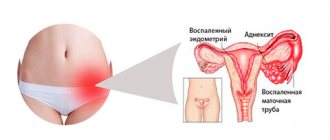What are acute respiratory infections and acute respiratory viral infections?
Both diseases are acute inflammations of various organs of the respiratory system, caused by various infections. Acute respiratory disease - acute respiratory disease - a broader name that is used when the viral component has not been established. And ARVI is an acute respiratory viral disease - when the clinical picture is clear and it is known for sure that the infection is caused by a virus. There are several such viruses: influenza, parainfluenza, respiratory syncytial infection, rhinovirus and adenovirus infection and others. Most often, the disease begins with an elevated temperature. Then it may be supplemented by headache, general weakness, fatigue, aching bones, redness of the pharyngeal mucosa, pain when swallowing, dry cough and nasal congestion. Among the troubles that accompany acute respiratory infections is the addition of a bacterial infection to the disease, which causes complications.
Cold
Cold
Angina
Herpes
4496 January 25
IMPORTANT!
The information in this section cannot be used for self-diagnosis and self-treatment.
In case of pain or other exacerbation of the disease, diagnostic tests should be prescribed only by the attending physician. To make a diagnosis and properly prescribe treatment, you should contact your doctor. Colds: causes, symptoms, diagnosis and treatment methods.
Definition
The term "cold" is not a medical term, but it is so commonly used that it requires more careful consideration. Usually, when talking about a cold, the patient associates his illness with hypothermia, especially since the peak incidence occurs in the cold season. However, hypothermia is only a trigger, a cause of weakened immunity and the development of the disease. Against the background of physical stress, a bacterial or viral infection is observed.
Penetration of viruses and bacteria into the human body
Colds can be caused by both viruses (and in these cases we talk about ARVI) and bacteria.
The combined effect of these microorganisms is also possible, when, against the background of weakened immunity due to a viral infection, active reproduction of the bacterial flora begins.
Causes of colds
The basis of colds is always a decrease in immune status, or more precisely, a lack of immune defense cells at the site of accumulation of pathogenic microorganisms. This occurs due to vasospasm under the influence of cold and poor circulation. Blood cells responsible for capturing and destroying microorganisms do not reach the mucous membrane, where opportunistic microorganisms are always present and where viruses penetrate first. As a result, their active reproduction begins, causing human disease.
Often there is a combined infection, when a violation of the barrier function of the mucous membranes due to a viral disease leads to the proliferation of opportunistic bacteria, which always live there in small quantities.
In addition, hypothermia, which the body perceives as stress, leads to activation of the herpes virus. This virus is found in almost all adults, however, provided they have good immunity, it “freezes” in the nerve cells and does not manifest itself. When the immune system is weakened under the influence of various stress factors (including cold), the virus is activated and moves along the nerve pathways to the surface of the skin, causing rashes on the lips, nose, etc.
Classification of diseases
Colds can be divided into viral (acute rhinosinusitis - inflammation of the mucous membrane of the nose and paranasal sinuses, herpetic infection) and bacterial (acute bacterial rhinosinusitis, acute rhinopharyngitis - inflammation of the mucous membrane of the nose and tonsils; sore throat, which is also called pharyngitis). Acute viral respiratory diseases can be caused by influenza or parainfluenza viruses, as well as adeno-, rhino- and coronaviruses.
The development of viral infections is promoted not only by hypothermia, but also by staying in close groups (schools, kindergartens, public transport), and age (children, elderly people).
Acute respiratory bacterial infections are caused by opportunistic pneumotropic microorganisms that often colonize mucous membranes, but do not develop in large quantities due to immune defense. Among them, streptococci, staphylococci, chlamydia and mycoplasma predominate, the carriage (normal presence in a healthy body) of which varies from 5% (mycoplasma) to 90% (staphylococcus). Acute respiratory bacterial infections, as a rule, are accompanied by less pronounced symptoms of intoxication, and the temperature usually does not exceed 38°C.
In the case of a bacterial infection joining a viral one, the acute form of the disease with a predominance of catarrhal phenomena is replaced by a chronic one, which can last a long time, leading to the development of complications.
Symptoms of a cold
Acute viral respiratory diseases caused by rhino-, corona- or adenoviruses, as well as influenza and parainfluenza viruses always manifest themselves with a sudden and sharp onset, deterioration of the general condition (fever, symptoms of intoxication, heaviness in the head, aching joints, muscle pain, nasal congestion, soreness and redness of the throat without the formation of plaque and films.
Cough during viral infections appears in 20% of cases and is acute, but benign. It disappears within 10–14 days, but sometimes it can last longer – up to 2–3 weeks, in these cases it is called post-infectious.
A dry and unproductive cough during ARVI is caused either by inflammatory changes in the mucous membrane of the upper respiratory tract, or by its irritation due to secretions flowing from the nasopharynx.
Colds caused by a bacterial infection tend to develop more slowly. It may not be accompanied by high fever and significant intoxication.
With a sore throat, not only redness of the mucous membrane is noted, but also plaque, the color and consistency of which depends on the bacterial agent.
Discharge from the nose acquires a greenish tint and a viscous consistency. When coughing, viscous sputum appears. Symptoms of inflammation caused by a bacterial infection may not only appear in the respiratory tract. Migrating through the circulatory system, bacteria are able to infect the heart, joints, kidneys and other organs with the development of corresponding symptoms.
Diagnosis of a cold
Questioning the patient (onset of the disease and symptoms) and examining the mucous membrane of the throat helps determine which infectious agent caused the cold. The presence of plaque, pustules and films speaks in favor of the bacterial nature of the cold. If only a hyperemic and swollen throat is noted, most likely it is a viral disease. Laboratory research methods help clarify the diagnosis and identify the specific causative agent of the cold. A clinical blood test is required to determine ESR and leukocyte formula, and if plaque is present, a smear from the mucous membrane of the pharynx for further microscopy and culture to determine sensitivity to antibiotics.
Risk factors
Almost every person knows first-hand what acute respiratory infections are. For the vast majority of adults, unpleasant symptoms of acute respiratory infections make themselves felt 2-3 times a year. As a rule, the peak incidence occurs in the damp and cold seasons, during a period of decreased protective function of the body and increased activity of viruses. For various reasons, acute respiratory infections and acute respiratory viral infections are particularly dangerous for people over 55 years of age, asthmatics, diabetics, with endocrinological and neurological problems, as well as for hypertensive patients. Pregnant women should be very careful.
Prevention of acute respiratory infections and acute respiratory viral infections
The only way to protect yourself from the flu is to get vaccinated. No medications provide a proven effect in preventing viral diseases. But the likelihood of catching ARVI can be reduced if you take preventive measures. Avoid crowds of people.
Viruses are transmitted by airborne droplets, so during epidemics it is worth protecting yourself as much as possible from contact with crowds.
This is the most reliable, albeit not always accessible, method. Strengthen general immunity.
To do this, it is enough to eat right, avoid lack of sleep and stress, and find time to play sports or at least take daily walks.
Strengthen local immunity.
When the mucous membranes dry out, the protective barrier that should protect us from viruses is reduced.
In this case, the risk of infection becomes higher. Therefore, it is important to avoid dry indoor air - frequently wash the floors or use a humidifier. Wash your hands regularly.
During epidemics, wash your hands or treat them with antibacterial gel every time after external contact.
What do doctors advise for prevention?
Wash your hands and maintain social distancing. Yes, these rules work not only with Covid-19, but also with seasonal ARVI.
Correct work-sleep-rest regime. Are you getting enough sleep, are you not overtired, and are you not under too much stress? This means you are less likely to get sick.
When we are indoors with other people, we are more likely to be exposed to germs. Organize comfortable temperature conditions, constantly ventilate the room and monitor the operation of the batteries.
People who exercise regularly have a lower risk of contracting a viral infection because physical activity strengthens the immune system. Even a small but regular load will do.
Treatment of acute respiratory infections and acute respiratory viral infections in adults
Antibiotics are powerless against viruses. For acute respiratory viral infections in adults, you must first help the body cope with the disease and avoid complications.
Non-drug therapy
Drink a lot.
Drinking plenty of warm fluids is one of the key factors on the road to recovery.
Water is needed to remove toxins and prevent mucus from thickening and causing even more inflammation. At high temperatures, the body loses a lot of fluid, so its replenishment is also necessary to prevent dehydration. Warm drinks are ideal - water (plain or with lemon), cranberry juice, ginger tea, compotes. Ensure optimal room humidity.
A sick person needs moist air even more than a healthy person.
After all, dry mucous membranes provoke thickening of sputum and, as a result, make breathing difficult. Use Doctor MOM® Phyto ointment.
This remedy helps relieve major cold symptoms, including nasal congestion, headache and muscle pain.
Rinse your nose.
The saline solution reduces bacteria and helps reduce inflammation.
Drug treatment
Drug therapy for acute respiratory viral infections in adults includes the use of antiviral drugs. It is important to take medications from this group from the first hours of the disease. If your temperature has already risen and you feel a general “weakness,” this means that the virus has already entered the body, and antiviral drugs will not help. Non-steroidal anti-inflammatory drugs are used to relieve severe headaches and muscle pain. People who have a hard time tolerating high body temperature may be advised to take antipyretics or complex medications, for example, RINZA® tablets or RINZASIP® powder with vitamin C. To relieve nasal congestion and runny nose, local vasoconstrictors are used, for example TIZIN® Xylo or TIZIN ® Xylo BIO. To avoid the development of negative side effects, they are allowed to be used for no more than 3-5 days, after which a mandatory break is required. To treat an acute dry cough, which often accompanies ARVI, it is necessary to prescribe drugs to thin and facilitate the separation of sputum, for example, mucolytic herbal remedies (in in particular, cough syrup Doctor MOM®). This complex herbal medicine, containing extracts of 10 medicinal plants, not only has an expectorant effect, but also has anti-inflammatory properties.
It is important to know!
Expectorants and mucolytics should not be taken simultaneously with antitussives: this can cause an excess of phlegm in the bronchi. For a dry cough or cough with little sputum, sputum thinners are prescribed; for a wet cough, expectorants are prescribed. Antitussive drugs are prescribed in exceptional cases when a person has a persistent cough.
Treatment of acute respiratory infections in adults should be carried out under the supervision of a doctor, especially if there are the following symptoms:
- high temperature, which has no or almost no effect from paracetamol;
- high temperature persists on the fourth day of illness;
- severe pain in the chest or head;
- purulent discharge;
- return of temperature a day after it disappears or on the seventh day of illness;
- deterioration of the condition after a short period of improvement;
- pale skin, severe lethargy, shortness of breath;
- intense sore throat in the absence of a runny nose or cough;
- severe dry cough that cannot be softened, attacks when trying to take a deep breath;
- rash.
It is important to know!
Despite numerous advice and the strong belief that a glass of vodka at night is the best medicine, alcoholic drinks do not help treat acute respiratory infections and acute respiratory viral infections. Alcohol lowers an already weakened immune system, blocks the ability of the kidneys to remove toxins, constricts blood vessels, causing headaches - in a word, it prevents the body from fighting infection. And drinking alcohol at high temperatures increases dehydration and leads to an exacerbation of the disease.
The most popular and effective antiviral drugs.
May 17, 2021
5826
0
Content
- How to distinguish ARVI from influenza?
- Umifenovir
- Viferon
- Kagocel
- The best flu medications
- Zanamivir
- Oseltamivir
Antiviral drugs are a large group of drugs, which includes drugs for the treatment of HIV and hepatitis, and those prescribed for influenza and other acute respiratory viral infections, and even homeopathic drugs, which are so widely advertised, but in fact are “dummies”.
Our rating of antiviral drugs is drugs aimed at treating acute respiratory viral infections, including influenza. Some drugs on our list are sold exclusively by prescription and should be taken exclusively under the supervision of a physician.





